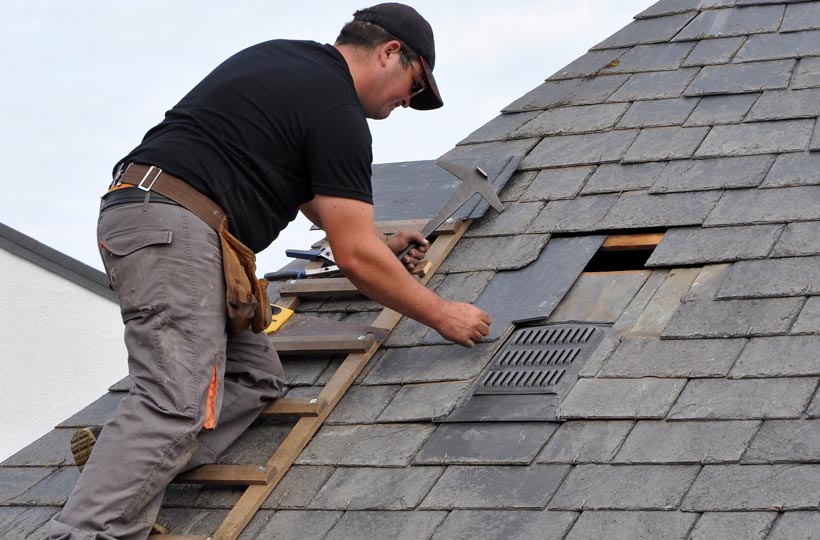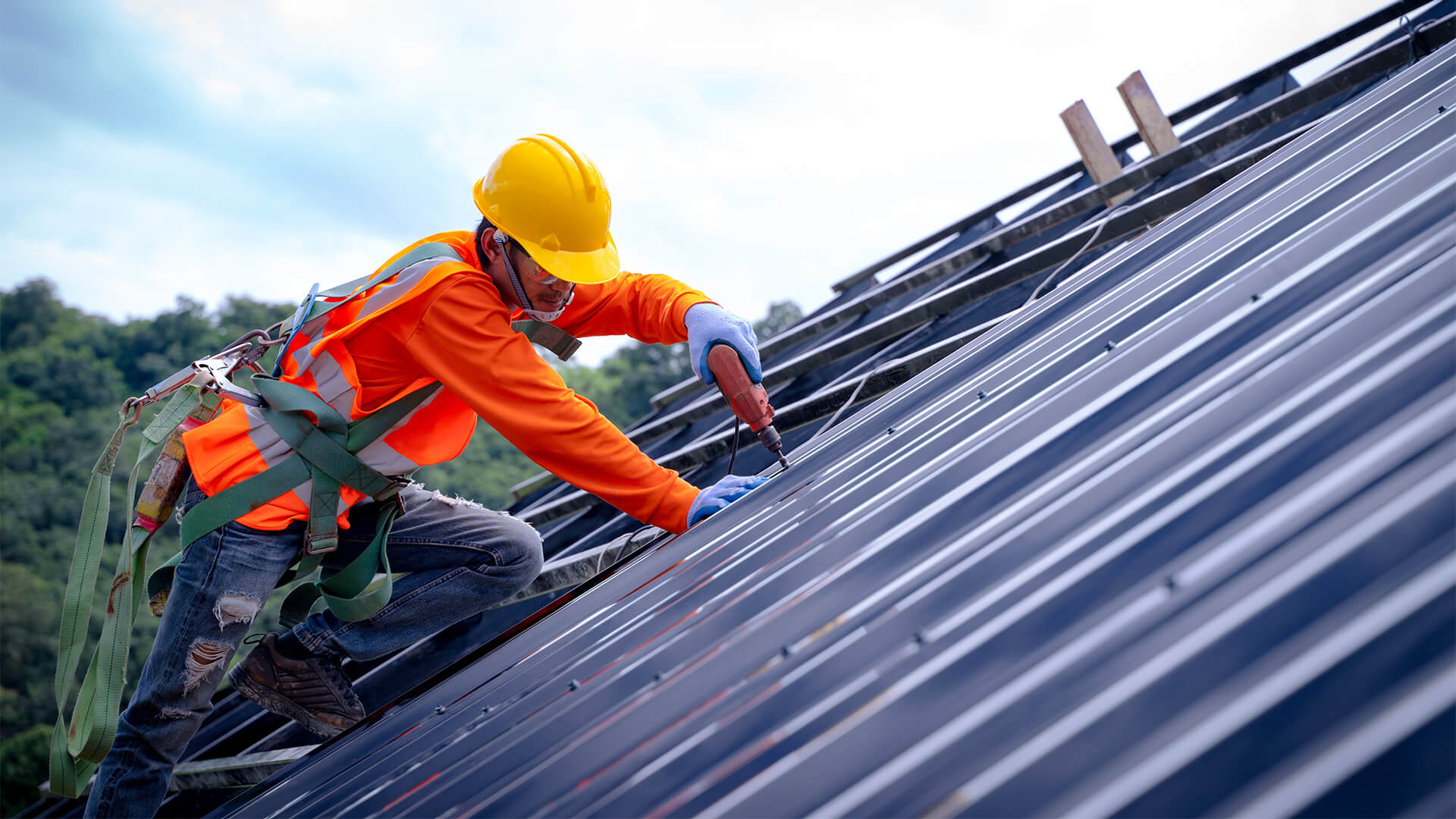Roofing Oahu: Quality Solutions for Durable Roofs in Oahu
Roofing Oahu: Quality Solutions for Durable Roofs in Oahu
Blog Article
Recognizing the Different Sorts Of Roof Coverings: A Comprehensive Guide for Homeowners
In the realm of homeownership, choosing the appropriate roofing style is a decision that lugs considerable ramifications for both performance and aesthetic allure. With an array of alternatives-- varying from the typical gable to the contemporary level-- each kind provides unique benefits and obstacles that should straighten with the property owner's environmental factors to consider and certain demands. Understanding these differences not just help in making an educated choice however likewise influences long-term upkeep and energy performance. As we discover the intricacies of numerous roofing kinds, it becomes evident that size does not fit all; the right choice might amaze you.
Saddleback Roof
Gable roofs, identified by their triangular shape, are among one of the most popular roofing designs as a result of their simplicity and performance in losing water and snow. This style includes 2 sloping sides that satisfy at a ridge, permitting for efficient drain and reducing the danger of water buildup. The steep pitch generally related to saddleback roofs boosts their capability to manage heavy precipitation, making them ideal for numerous climates.
In addition to their sensible benefits, gable roofings offer visual convenience. They can be adjusted to different architectural designs, from standard to modern-day homes. The layout can also suit extra features such as dormer home windows, which boost all-natural light and ventilation in the attic room area.
Moreover, saddleback roofs provide adequate space for insulation, adding to power effectiveness. House owners can select from a variety of roof products, consisting of asphalt roof shingles, steel, and tiles, better boosting personalization alternatives.
Despite their advantages, gable roofs may call for additional support in locations vulnerable to high winds or hefty snowfall. Generally, the saddleback roof stays a popular choice because of its blend of capability, resilience, and aesthetic appeal.
Apartment Roofs
Level roofs are frequently acknowledged for their minimal style and useful applications, specifically in commercial and industrial settings (oahu roofing). These roofing systems include a horizontal or almost horizontal surface area, which permits simple building and construction and flexible space use. While they may lack the aesthetic appeal of angled roofs, level roofings use numerous benefits, particularly in metropolitan atmospheres where optimizing space is crucial
Among the main advantages of level roof coverings is their accessibility. House owners can utilize the roofing system area for different functions, such as rooftop yards, terraces, or photovoltaic panel installations. In addition, level roofs are usually much more cost-effective to mount and maintain compared to their sloped counterparts, as they need less materials and labor.
Typical products used for flat roofing systems consist of built-up roof covering (BUR), changed bitumen, and single-ply membranes, each offering unique benefits. Overall, level roof coverings offer as a useful and versatile option for lots of home owners and businesses alike.
Hip Roofings
Hip roofing systems are identified by their sloped sides that assemble at the top, developing a ridge. This design is unique from saddleback roofs, as all 4 sides of a hip roofing system slope downwards towards the walls, giving an extra steady structure. The angle of the slopes can vary, enabling for adaptability in building appearances and capability.
One of the primary advantages of hip roofing systems is their capability to endure hefty winds and negative weather. The sloped surface areas make it possible for far better water drain, decreasing the danger of leakages and water damages. In addition, hip roofings provide enhanced attic room space, which can be used for storage space or also exchanged comfortable areas.
However, constructing a hip roofing system can be more complex and costly than less complex roof types, such as saddleback roofs. The additional material and labor associated with producing the inclines and making sure appropriate architectural stability can result in greater expenses. In spite of these drawbacks, lots of property owners prefer hip roof coverings for their sturdiness, aesthetic charm, and capacity for power effectiveness.
Mansard Roofings
Mansard roofs, often recognized by their special four-sided layout, feature two inclines on each side, with the lower incline being steeper than the top. This building design, stemming from France in the 17th century, is not only visually appealing however useful, as it optimizes the usable area in the upper floorings of a structure. The steep reduced slope enables even more headroom, making it a suitable option for lofts or attics, which can be converted right into living rooms.
Mansard roofing systems are identified by their convenience, fitting different building designs, from standard to contemporary. They can be created with different products, consisting of asphalt shingles, slate, or steel, giving house owners with a variety of options to fit their budget plans and choices. In addition, the layout permits for the integration of dormer windows, improving natural light and ventilation in the upper degrees.
However, it is necessary to think about the possible drawbacks. Mansard roofing systems might call for even more maintenance due to the complexity of their layout, and their high slopes can be challenging for snow and rain drainage. In general, mansard roofs incorporate beauty with practicality, making them a prominent selection among home owners seeking unique building functions.
Dropped Roof Coverings
As home owners progressively look for simplicity and performance in their building styles, dropped roof coverings have emerged as a prominent choice. Your Domain Name Characterized by a single sloping plane, a shed roofing system provides a minimalist visual that enhances different home designs, from modern to rustic.
Among the main advantages of a shed roof covering is its uncomplicated construction, which commonly translates to reduce labor and product expenses. This layout permits reliable water drainage, minimizing the danger of leaks and water damages. In addition, the vertical incline gives ample area for skylights, enhancing all-natural light within the inside.
Shed roofing systems likewise provide adaptability in terms of use. They can be effectively incorporated into additions, garages, or outdoor frameworks like structures and sheds. you could check here Moreover, this roof covering style can accommodate various roof products, including metal, asphalt tiles, or even eco-friendly roofings, aligning with environment-friendly efforts.
Nevertheless, it is vital to take into consideration local climate conditions, as hefty snow lots might require modifications to the roofing's angle or framework. Overall, shed roofings present a practical and visually pleasing alternative for home owners looking to make best use of capability without endangering style.
Conclusion


Gable roof coverings, characterized by their triangular form, are amongst the most popular roofing styles due to their simplicity and effectiveness in dropping water and snow. oahu roofing. The steep pitch frequently connected with directory gable roofings boosts their capability to deal with hefty precipitation, making them ideal for numerous environments
While they may do not have the aesthetic appeal of pitched roofings, flat roofing systems provide various advantages, specifically in metropolitan settings where making best use of room is vital.

Report this page